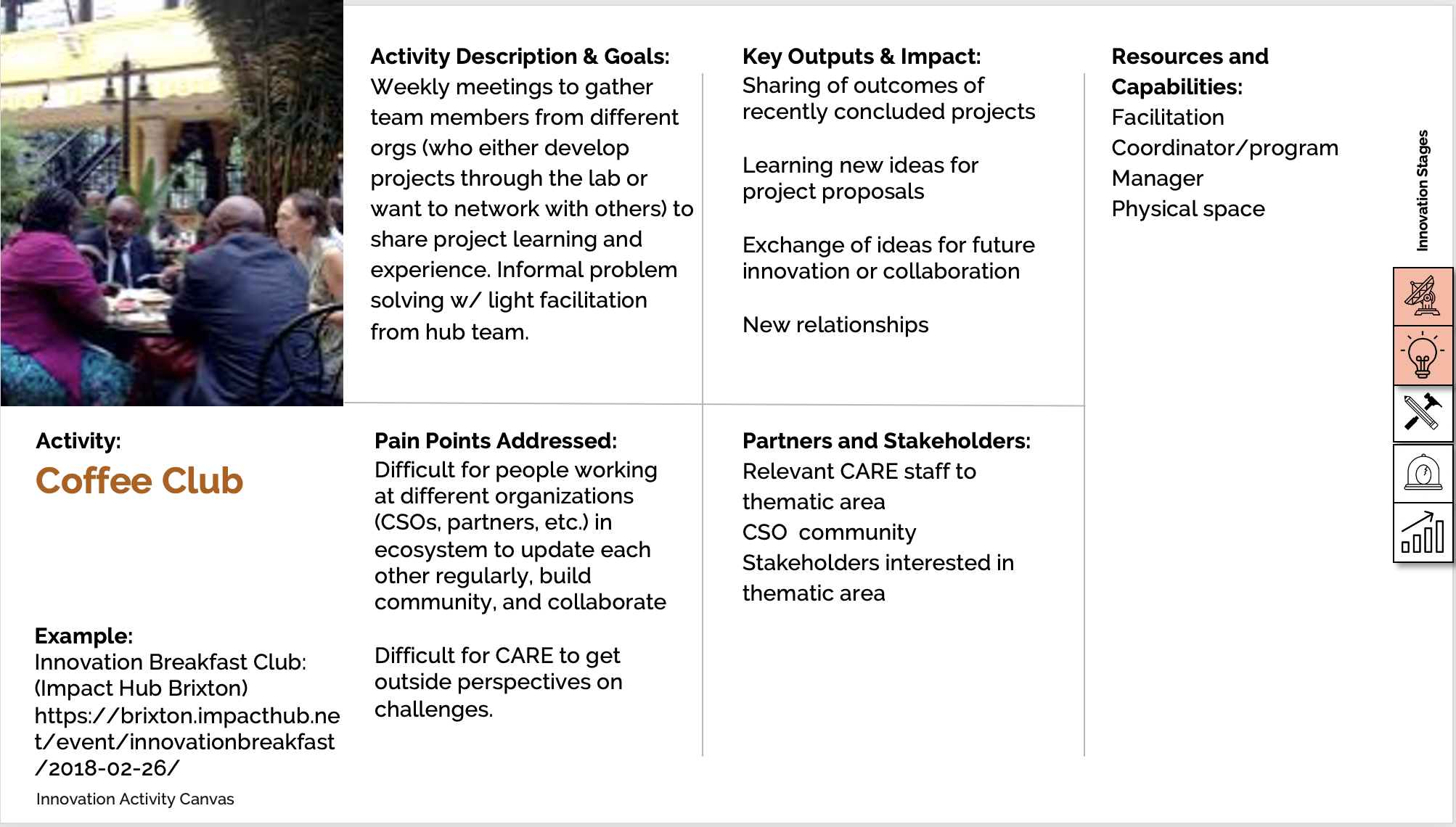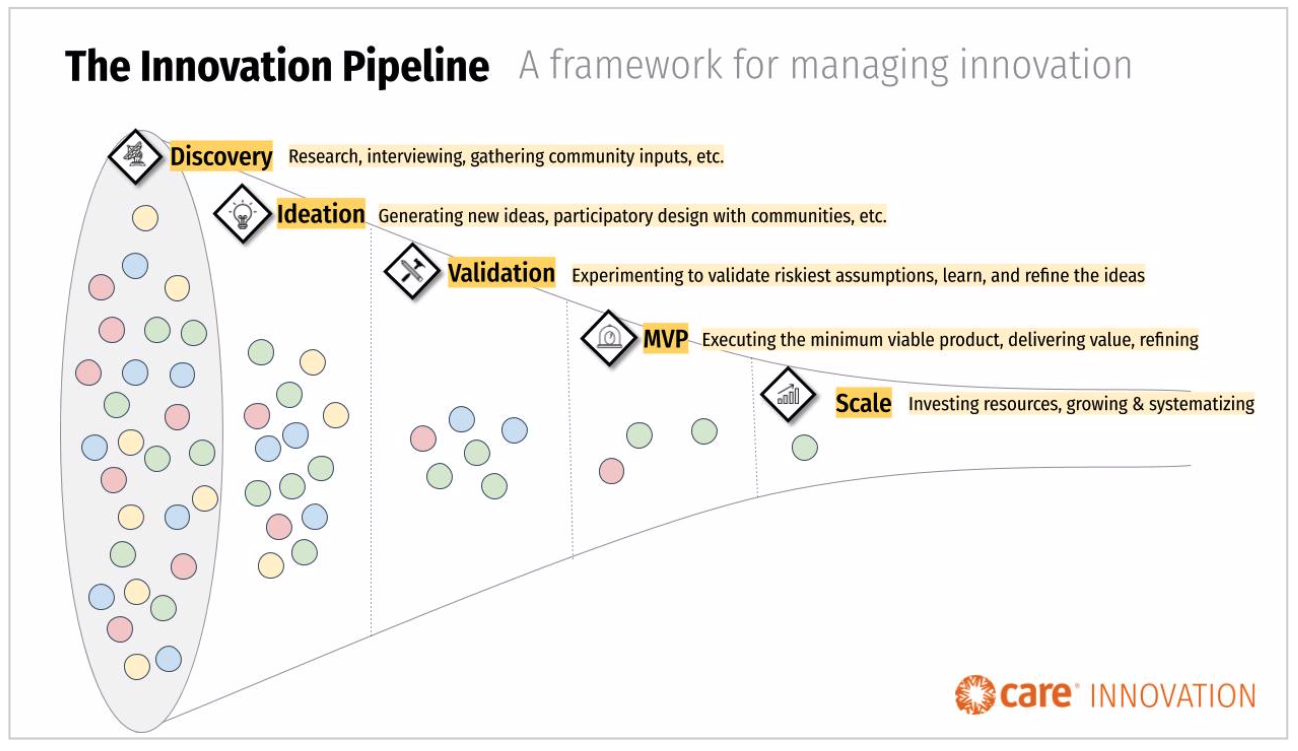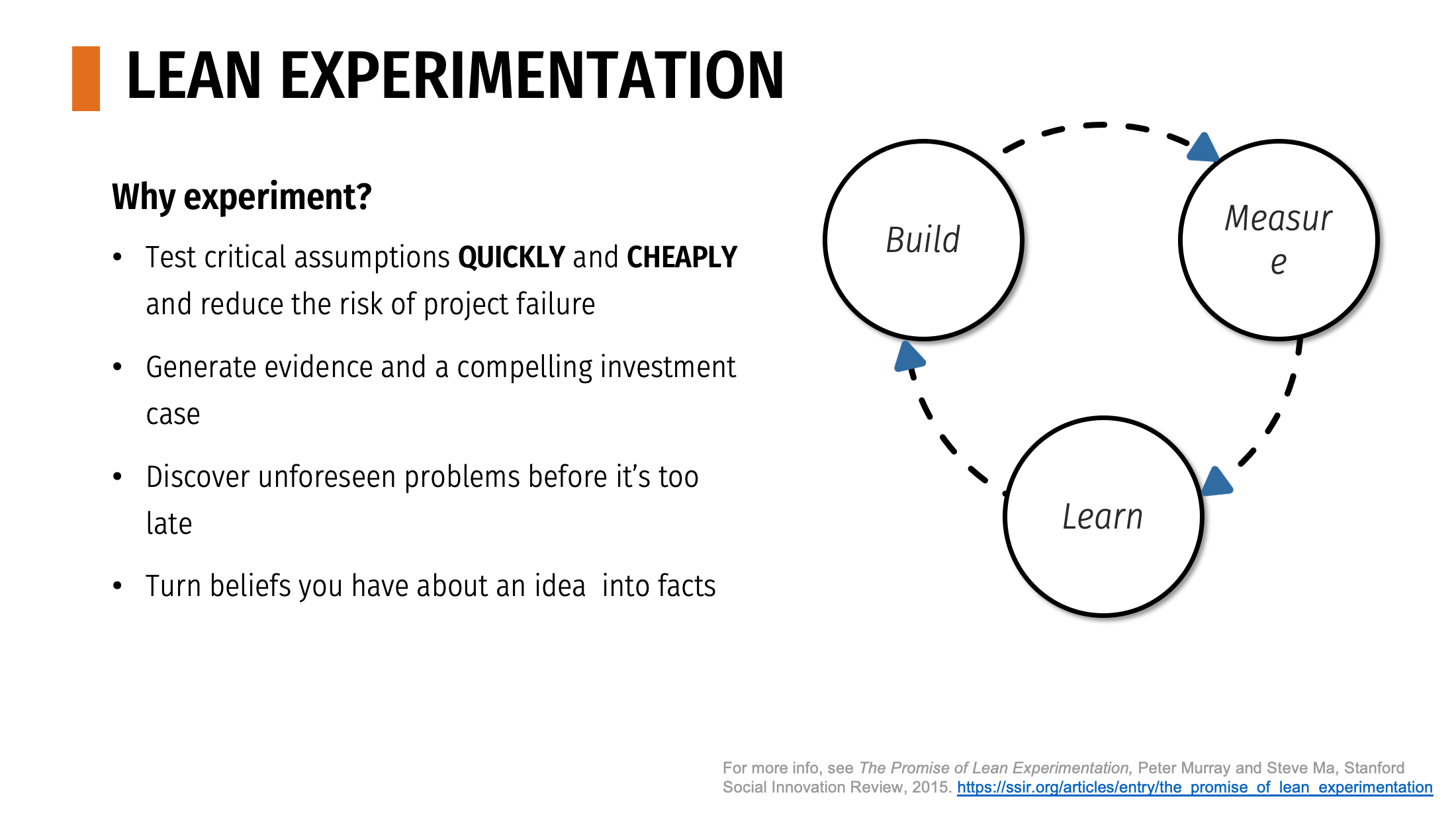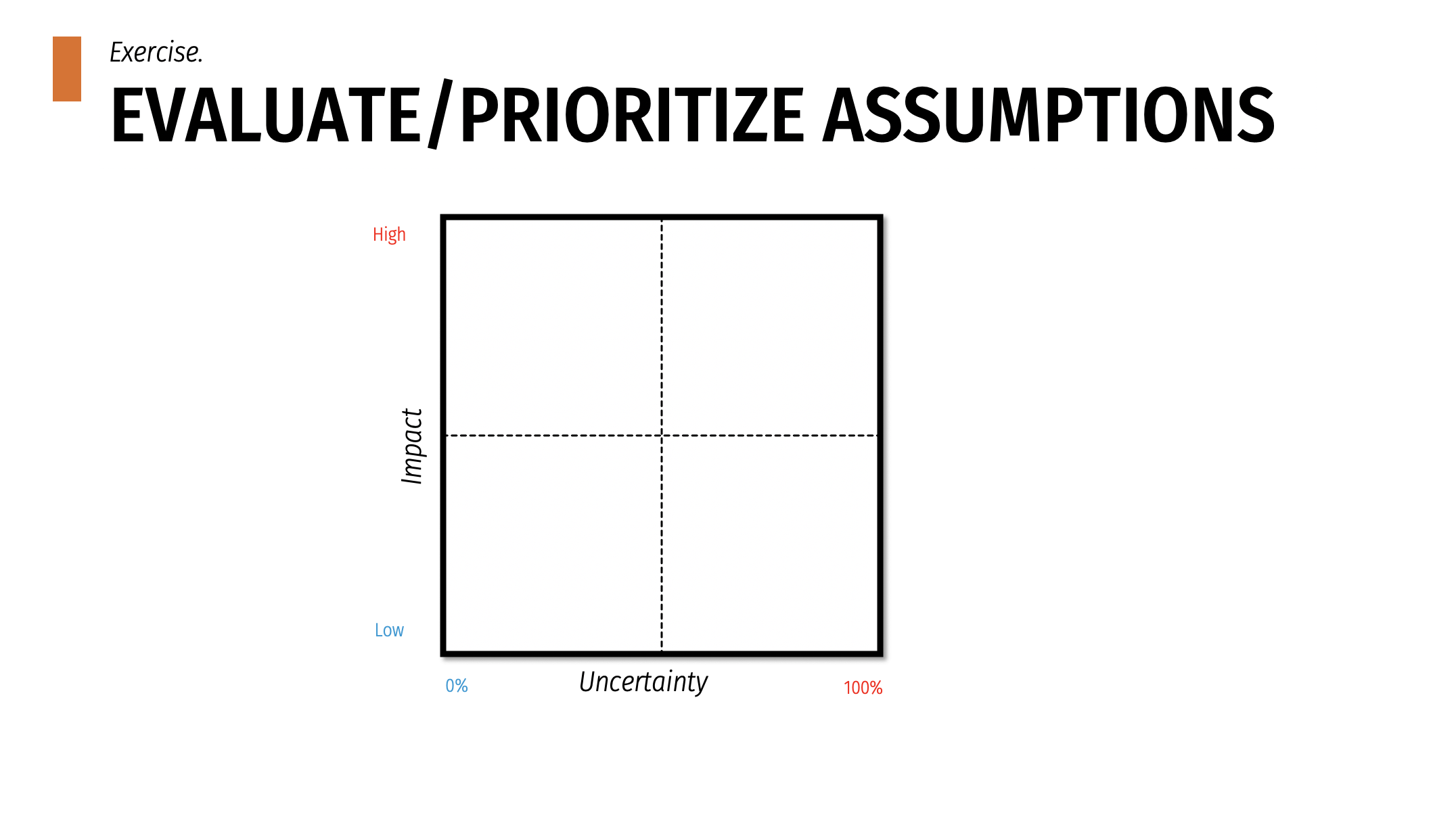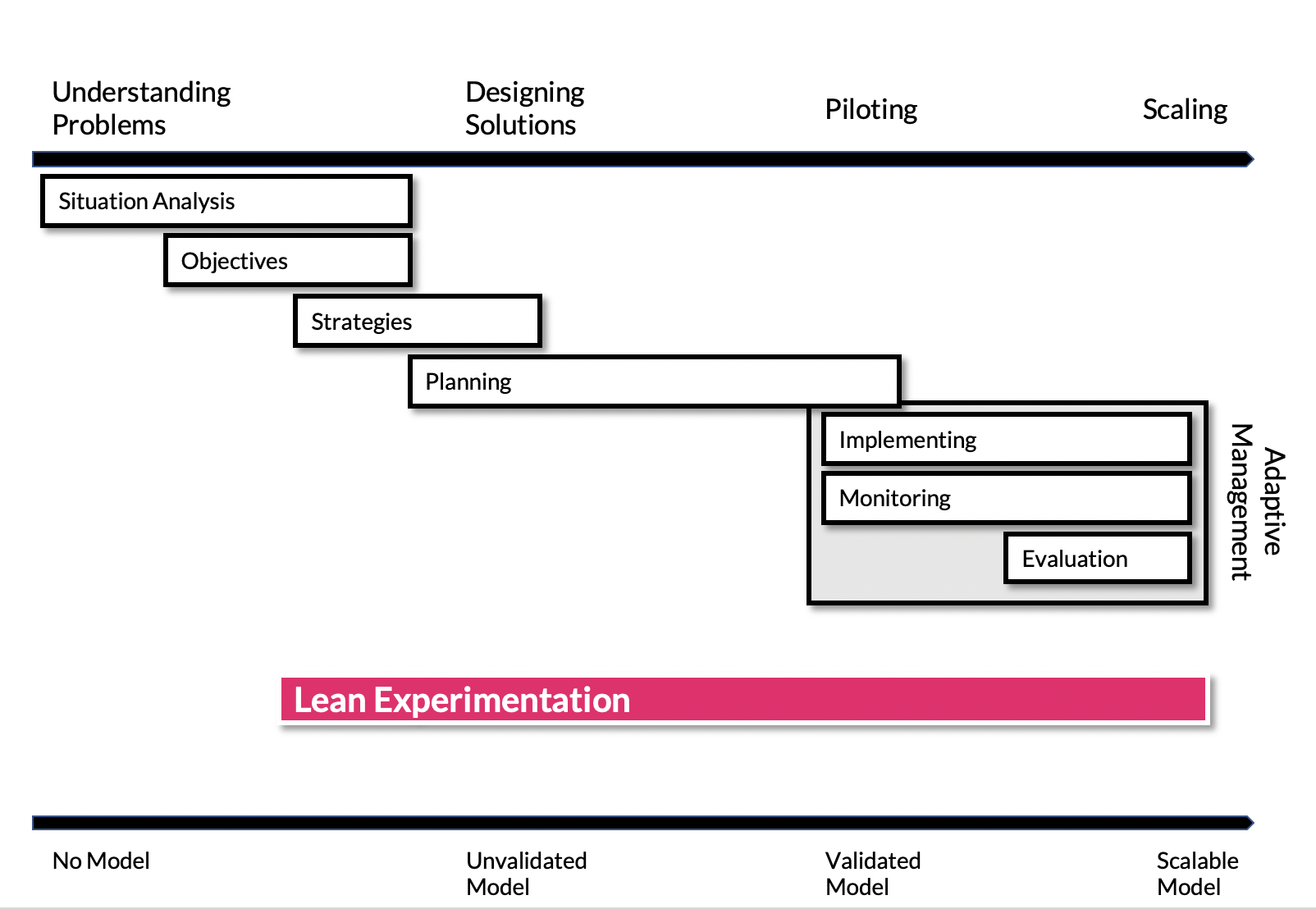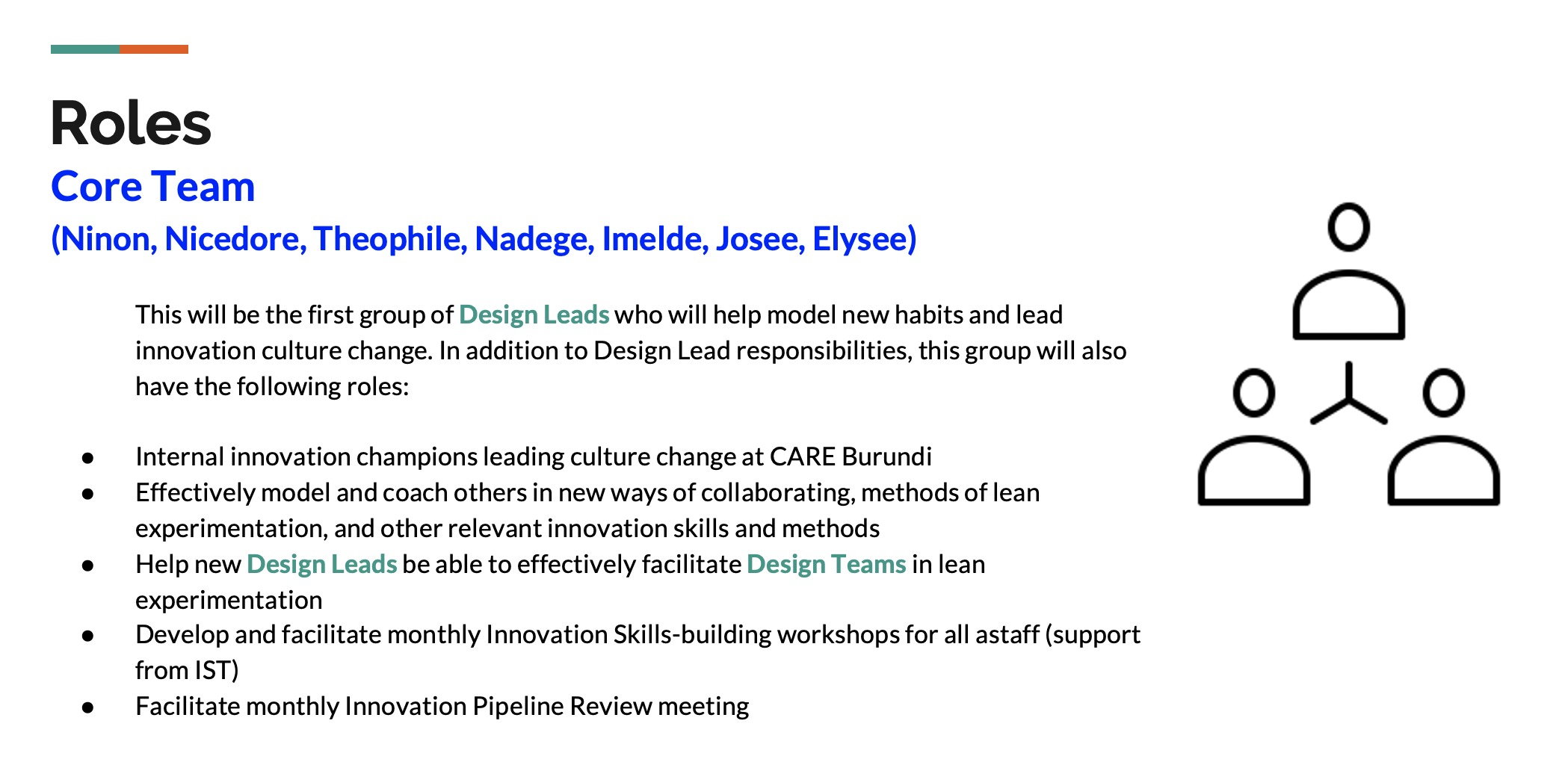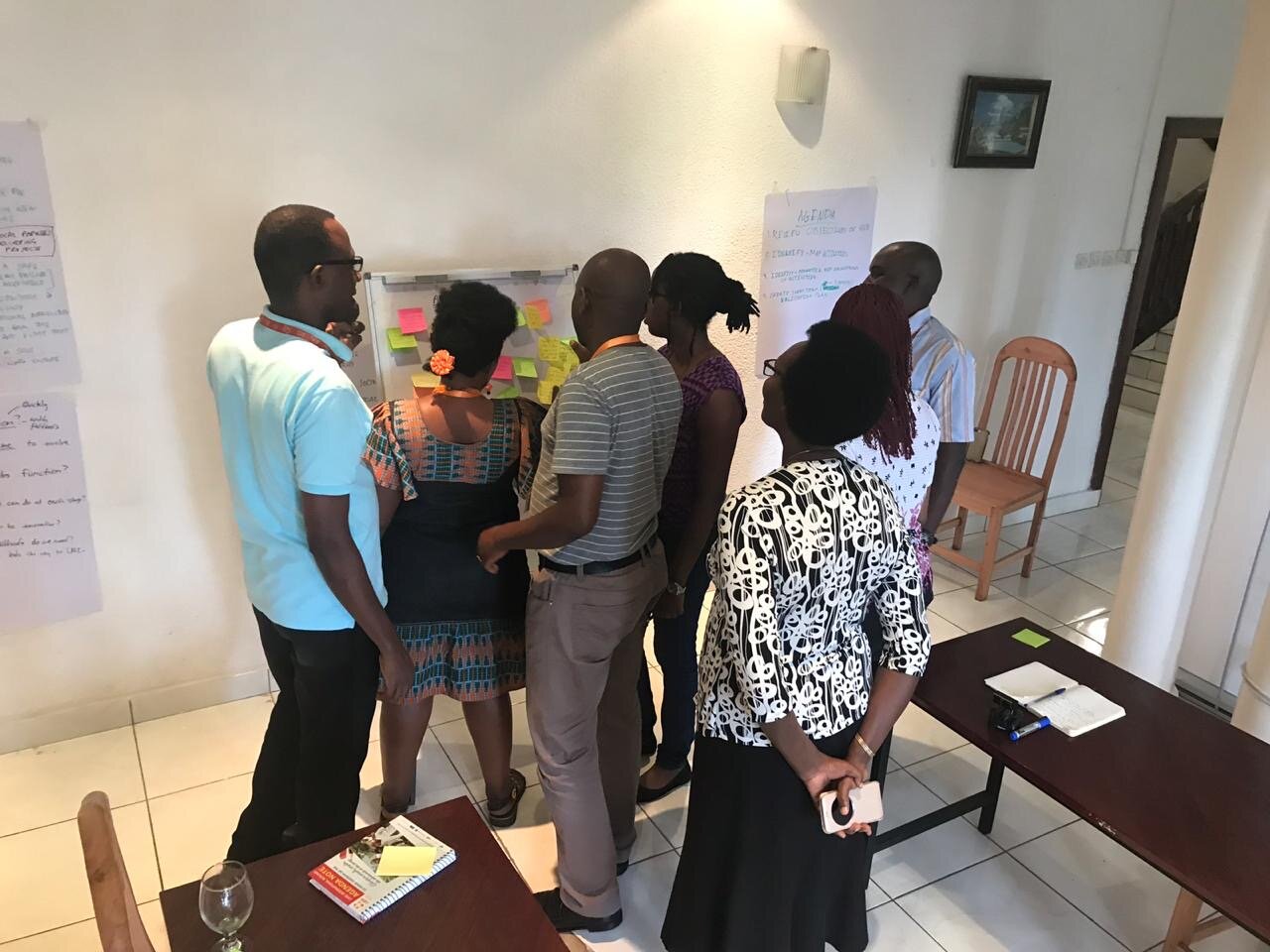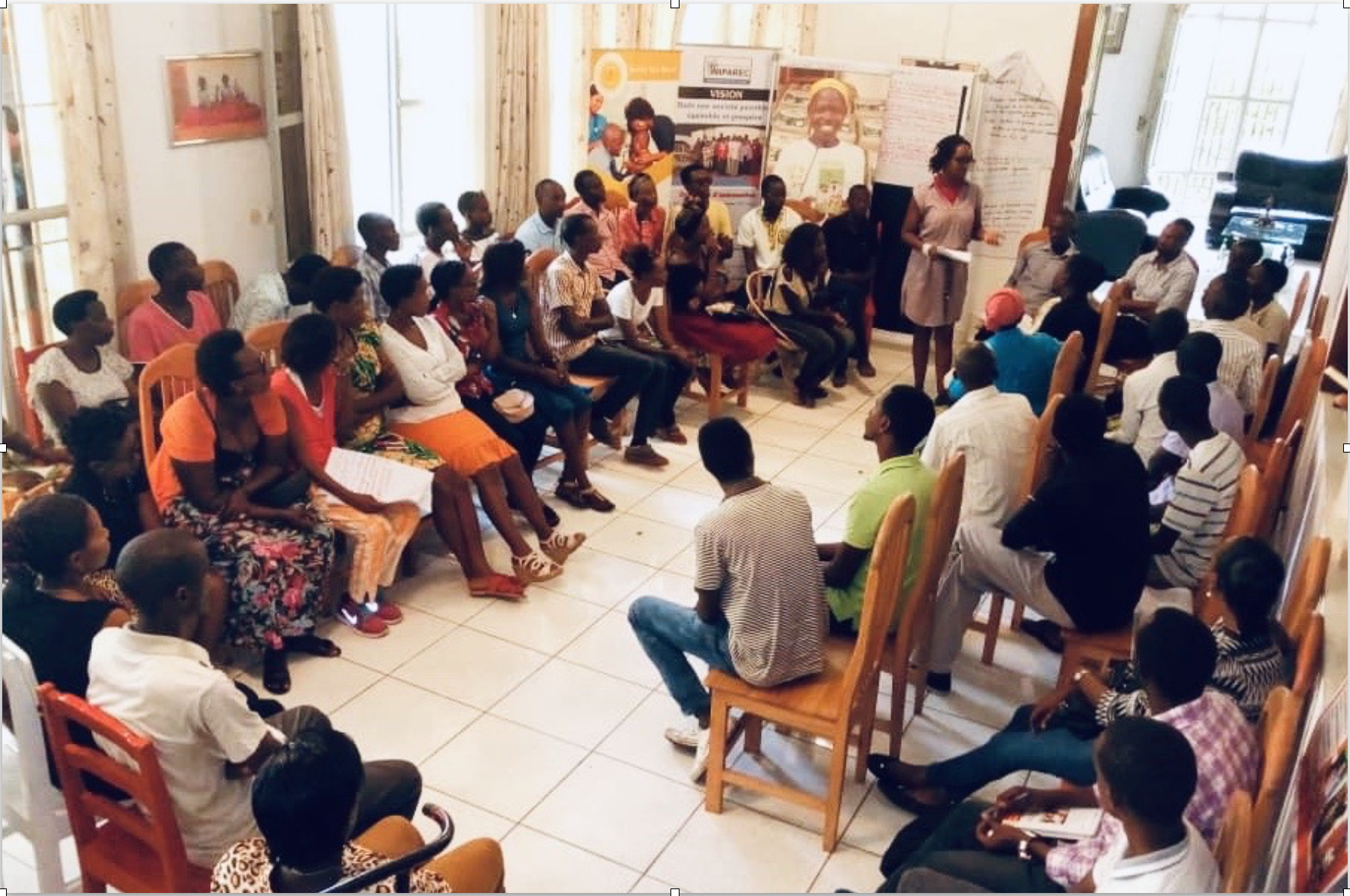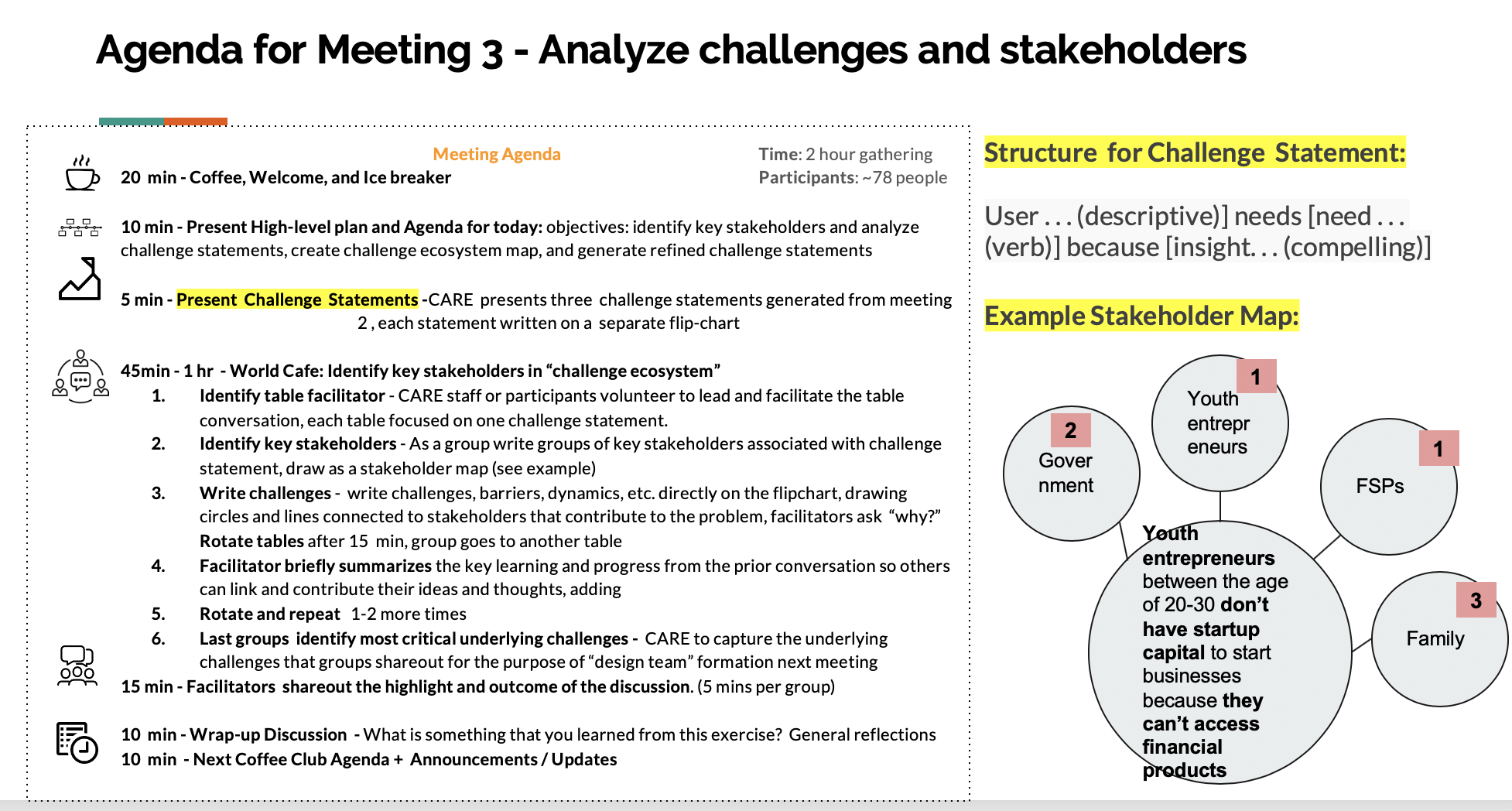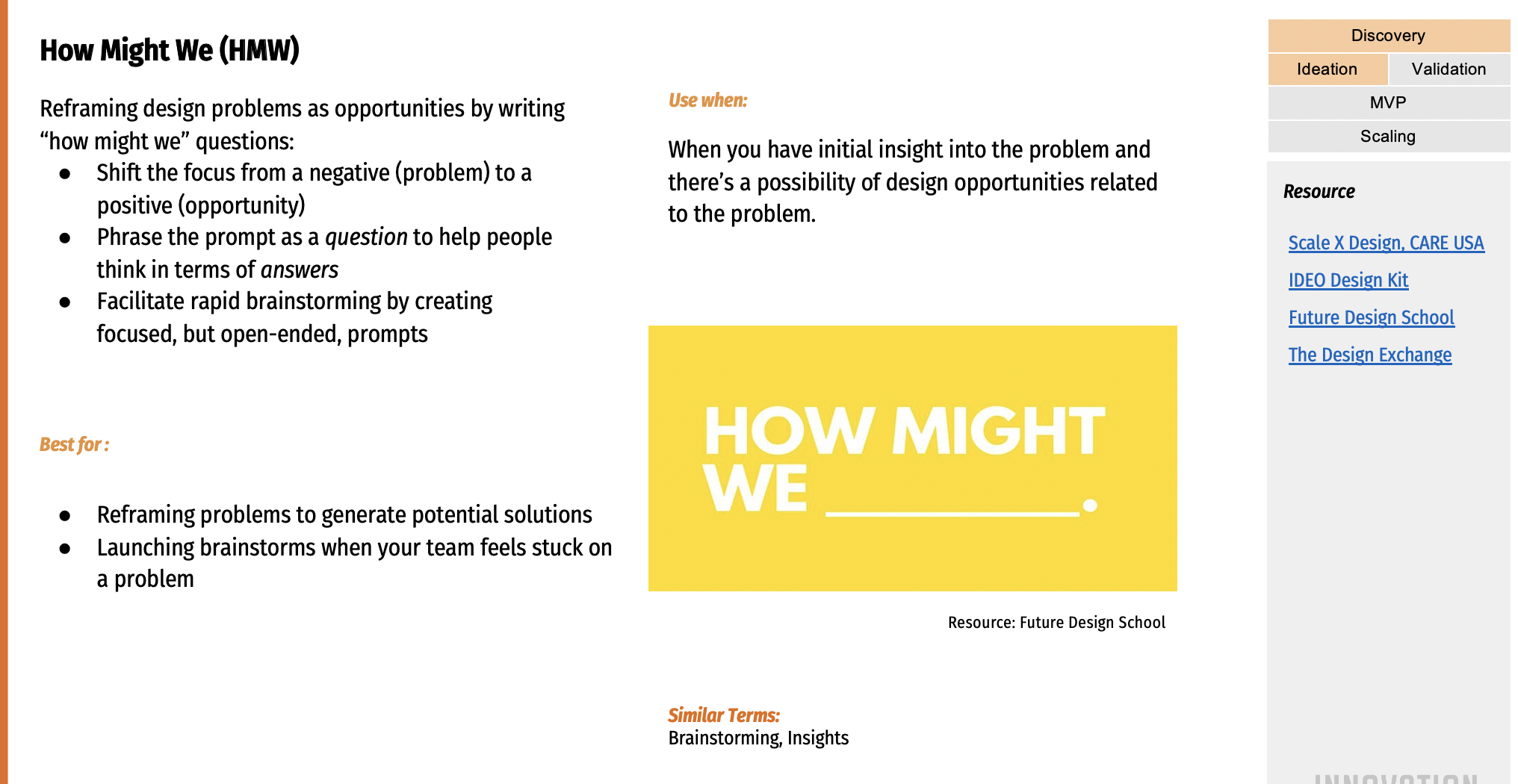Innovation Management System in Burundi
Utilize participatory design methods to surface and co-develop locally-sourced development solutions within an ecosystem of stakeholders, generating more sustained and far reaching outcomes for youth
Jan-sep,2019
Client
CARE Burundi
> Role
Design strategist, project lead
Deliveries
Generative and evaluative research, Innovation management framework, capacity building workshops
Background
Since 1994 CARE Burundi has been championing the rights and empowerment of women and youth in a country which has continued to face complexity and crisis. CARE Burundi enlisted the support of CARE USA’s Innovation Team to advise on their strategy to activate the Nawe Nuze Innovation Hub. Over the course of nine months, our team:
Capacitated a core team in lean experimentation and human-centered design skills,
Designed an innovation management system using a stage-gated, iterative, validation-driven approach to developing and investing in new ideas, and
Catalyzed new ideas for non-traditional program models.
Nawe Nuze Innovation Hub: a fully equipped centre established to engage and collaborate with civil society, youth, the private sector and peer NGOs in order to design, test, and deliver solutions to the challenges faced by young people across the country.
“In a 2016 CARE global survey of over 5,000 staff, 86% of CARE staff reported that they had or knew about an innovative idea but only 13% of them knew the support systems or resources within CARE to test, iterate and bring those ideas to life. ”
problem and Opportunities in Burundi
Deepen the impact of the teams work in Burundi
Changing donor environment
Lack of tools, capacities, and resources
Key stakeholders
CARE Burundi: Country Director, Regional Program Quality Director, Program Director, Innovation Specialist, Program managers x5
My role & tEAM:
Project Lead (started from the phase 2), Design Strategist, and Training Instructor
Designed & iterated tools to help staff to smoothly adapt approaches to work
Upskilled staff and supervised their experimentation process
Conducted secondary research to learn the behavior change, leading challenges, and prioritize needs.
Facilitated workshops to refine management processes, identify pipeline metrics and establish the theory of change for the trajectory.
Innovation Service Team:
Director: Tim Bishop | Senior Advisor: Dane Wetschler | Design Strategist: Grace Hsieh | Program officer: Dana Tzegaegbe
Time
6 months intensive engagement with additional 3 months optional virtual office hours support



